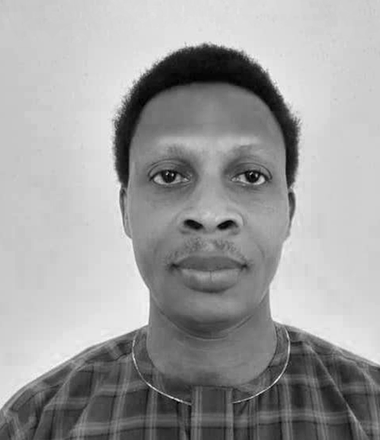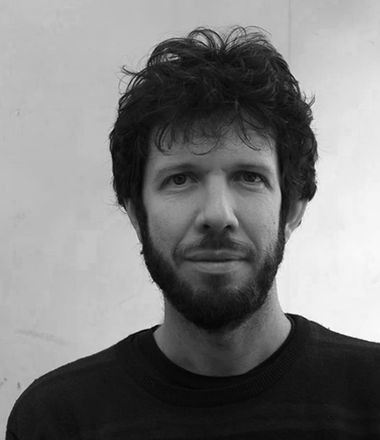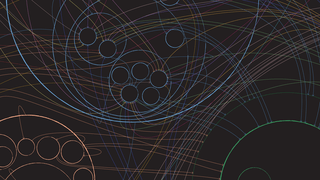In a shiny new factory in the Benin forest, a woman named Blessing slices pineapples into rings. Hundreds of miles away, at a remote border post in the Sahara, Abubakar scans travellers’ fingerprints. And in village squares across Nigeria, Usman performs his theatre show about the dangers of travelling to Europe.
What do all these people have in common?
All their lives are touched by the billions of euros European governments spend in an effort to curb migration from Africa.
Since the summer of 2015, when countless boats full of migrants began arriving on the shores of Greece and Italy, Europe has increased migration spending by billions. And much of this money is being spent in Africa.
Within Europe, the political left and right have very different ways of framing the potential benefits of that funding. Those on the left say migration spending not only provides Africans with better opportunities in their home countries but also reduces migrant deaths in the Mediterranean. Those on the right say migration spending discourages Africans from making the perilous journey to Europe.
However they spin it, the end result is the same: both left and right have embraced funding designed to reduce migration from Africa. In fact, the European Union (EU) plans to double migration spending under the new 2021-2027 budget, while quadrupling spending on border control.

The three of us – journalists from Nigeria, Italy and the Netherlands – began asking ourselves: just how much money are we talking here?
At first glance, it seems like a perfectly straightforward question. Just add up the migration budgets of the EU and the individual member states and you’ve got your answer, right? But after months of research, it turns out that things are nowhere near that simple.
In fact, we discovered that European migration spending resembles nothing so much as a gigantic plate of spaghetti. If you try to tease out a single strand, at least three more will cling to it. Try to find where one strand begins, and you’ll find yourself tangled up in dozens of others.
This is deeply concerning. Though Europe maintains a pretence of transparency, in practice it’s virtually impossible to hold the EU and its member states accountable for their migration expenditures, let alone assess how effective they are. If a team of journalists who have devoted months to the issue can’t manage it, then how could EU parliament members juggling multiple portfolios ever hope to?
This lack of oversight is particularly problematic in the case of migration, an issue that ranks high on European political agendas. The subject of migration fuels a great deal of political grandstanding, populist opportunism, and social unrest. And the debate surrounding the issue is rife with misinformation.
For an issue of this magnitude, it’s crucial to have a clear view of existing policies and to examine whether these policies make sense. But to be able to do that, we need to understand the funding streams: how much money is being spent and what is it being spent on?
While working on this article, we spoke to researchers and officials who characterised EU migration spending as “opaque”, “unclear” and “chaotic”. We combed through countless websites, official documents, annual reports and budgets, and we submitted freedom of information requests in a number of European countries, in Nigeria, and to the European commission. And we discovered that the subject of migration, while not exactly cloak-and-dagger stuff, is apparently sensitive enough that most people preferred to speak off the record.
Above all, we were troubled by the fact that no one seems to have a clear overview of European migration budgets – and by how painfully characteristic this is of European migration policy as a whole.
Nigeria – ‘a tough cookie’
It wasn’t long before we realised that mapping out all European cash flows to all African countries would take us years. Instead, we decided to focus on Nigeria, Africa’s most populous country and the continent’s strongest economy, as well as the country of origin of the largest group of African asylum seekers in the EU. “A tough cookie” in the words of one senior EU official, but also “our most important migration partner in the coming years”.
But Nigeria wasn’t exactly eager to embrace the role of “most important migration partner”. After all, migration has been a lifeline for Nigeria’s economy: last year, Nigerian migrants living abroad sent home $25bn – roughly 6% of the country’s GNP. It took a major European charm offensive to get Nigeria on board – a “long saga” with “more than one tense meeting”, according to a high-ranking EU diplomat we spoke to.
The European parliament invited Muhammadu Buhari, the Nigerian president, to Strasbourg in 2016. Over the next several years, one European dignitary after another visited Nigeria: from Angela Merkel, the German chancellor, to Matteo Renzi, the Italian prime minister, to Emmanuel Macron, the French president, to Mark Rutte, the Dutch prime minister.
Three guesses as to what they all wanted to talk about.
‘No data available’
But let’s get back to those funding streams.
The EU would have you believe that everything fits neatly into a flowchart. When asked to respond to this article, the European commission told us: “We take transparency very seriously.” One spokesperson after another, all from various EU agencies, informed us that the information was “freely available online”.
But as Wilma Haan, director of the Open State Foundation, notes: “Just throwing a bunch of stuff online doesn’t make you transparent. People have to be able to find the information and verify it.”
Yet that’s exactly what the EU did. The EU foundations and agencies we contacted referred us to dozens of different websites. In some cases, the information was relatively easy to find, but in others the data was fragmented or missing entirely. All too often, our searches turned up results such as “data soon available” or “no data available”.
The website of the Asylum, Migration and Integration Fund (AMIF) – worth around €3.1bn – is typical of the problems we faced. While we were able to find a list of projects funded by AMIF online, the list only contains the names of the projects – not the countries in which they’re carried out. As a result, there’s only one way to find out what’s going on where: by Googling each of the project names individually.
This lack of a clear overview has major consequences for the democratic process, says Tineke Strik, member of the European parliament (Green party). Under the guise of “flexibility”, the European parliament has “no oversight over the funds whatsoever”. Strik says: “In the best-case scenario, we’ll discover them listed on the European commission’s website.”
At the EU’s Nigerian headquarters, one official explained that she does try to keep track of European countries’ migration-related projects to identify “gaps and overlaps”. When asked why this information wasn’t published online, she responded: “It’s something I do alongside my daily work.”
Getting a feel for Europe’s migration spaghetti
“There’s no way you’re going to get anywhere with this.”
This was the response from a Correspondent member who researches government funding when we announced this project several months ago. Not exactly the most encouraging words to start our journey. Still, over the past few months, we’ve done our best to make as much progress as we could.
Let’s start in the Netherlands, Maite’s home country. When we tried to find out how much Dutch tax money is spent in Nigeria on migration-related issues, we soon found ourselves down yet another rabbit hole.

The Dutch ministry of foreign affairs, which controls all funding for Dutch foreign policy, seemed like a good starting point. The ministry divides its budget into centralised and decentralised funds. The centralised funds are managed in the Netherlands administrative capital, The Hague, while the decentralised funds are distributed by Dutch embassies abroad.

Exactly how much money goes to the Dutch embassy in the Nigerian capital Abuja is unclear – no information is available online. When we contacted the embassy, they weren’t able to provide us with any figures, either. According to their press officer, these budgets are “fragmented”, and the total can only be determined at the end of the year.

The ministry of foreign affairs distributes centralised funds through its departments. But migration is a topic that spans a number of different departments: the department for stabilisation and humanitarian aid (DSH), the security policy department (DVB), the sub-Saharan Africa department (DAF), and the migration policy bureau (BMB), to name just a few. There’s no way of knowing whether each department spends money on migration, let alone how much of it goes to Nigeria.

Not to mention the fact that other ministries, such as the ministry of economic affairs and the ministry of justice and security, also deal with migration-related issues.

Next, we decided to check out the Dutch development aid budget in the hope it would clear things up a bit. Unfortunately, the budget isn’t organised by country, but by theme. And since migration isn’t one of the main themes, it’s scattered over several different sections. Luckily, the document does contain an annex that goes into more detail about migration.
In this annex, we found that the Netherlands spends a substantial chunk of money on “migration cooperation”, “reception in the region” and humanitarian aid for refugees.

And then there’s the ministry of foreign affairs’ Stability Fund, the ministry of justice and security’s budget for the processing and repatriation of asylum seekers, and the ministry of education, culture and science’s budget for providing asylum seekers with an education.

But again, it’s impossible to determine just how much of this funding finds its way to Nigeria. This is partly due to the fact that many migration projects operate in multiple countries simultaneously (in Nigeria, Chad and Cameroon, for example). Regional projects such as this generally don’t share details of how funding is divided up among the participating countries.

Using data from the Dutch embassy and an NGO that monitors Dutch projects in Nigeria, we found that €6m in aid goes specifically to Nigeria, with another €19m for the region as a whole. Dutch law enforcement also provides in-kind support to help strengthen Nigeria’s border control.

But hold on, there’s more. We need to factor in the money that the Netherlands spends on migration through its contributions to the EU.
The Netherlands pays hundreds of millions into the European Development Fund (EDF), which is partly used to finance migration projects. Part of that money also gets transferred to another EU migration fund: the EUTF for Africa. The Netherlands also contributes directly to this fund.
But that’s not all. The Netherlands also gives (either directly or through the EU) to a variety of other EU funds and agencies that finance migration projects in Nigeria. And just as in the Netherlands, these EU funds and agencies are scattered over many different offices. There’s no single “EU ministry of migration”.

To give you a taste of just how convoluted things can get: the AMIF falls under the EU’s home affairs “ministry” (DG HOME), the Development Cooperation Instrument (DCI) falls under the “ministry” for international cooperation and development (DG DEVCO), and the Instrument contributing to Stability and Peace (IcSP) falls under the European External Action Service (EEAS). The EU border agency, Frontex, is its own separate entity, and there’s also a “ministry” for humanitarian aid (DG ECHO).
Still with me?

Because this was just the Netherlands.
Now let’s take a look at Giacomo’s country of origin, Italy, which is also home to one of Europe’s largest Nigerian communities (surpassed only by the UK).

Italy’s ministry of foreign affairs funds the Italian Agency for Development Cooperation (AICS), which provides humanitarian aid in north-eastern Nigeria, where tens of thousands of people have been displaced by the Boko Haram insurgency. AICS also finances a wide range of projects aimed at raising awareness of the risks of illegal migration. It’s impossible to say how much of this money ends up in Nigeria, though, since the awareness campaigns target multiple countries at once.

This data is all available online – though you’ll have to do some digging to find it. But when it comes to the funds managed by Italy’s ministry of the interior, things start to get a bit murkier. Despite the ministry having signed numerous agreements on migration with African countries in recent years, there’s little trace of the money online. Reference to a €92,000 donation for new computers for Nigeria’s law enforcement and immigration services was all we could find.

Things get even more complicated when we look at Italy’s “Africa Fund”, which was launched in 2017 to foster cooperation with “priority countries along major migration routes”. The fund is jointly managed by the ministry of foreign affairs and the ministry of the interior.

Part of the money goes to the EUTF for Africa, but the fund also contributes to United Nations (UN) organisations, such as the UN Refugee Agency (UNHCR) and the International Organization for Migration (IOM), as well as to the Italian ministry of defence and the ministry of economy and finance.

Like most European governments, Italy also contributes to EU funds and agencies concerned with migration, such as Frontex, Europol, and the European Asylum Support Office (EASO).

And then there are the contributions to UN agencies that deal with migration: UNHCR, the UN Office for the Coordination of Humanitarian Affairs (OCHA), IOM, the UN Development Programme (UNDP), and the UN Office on Drugs and Crime (UNODC), to name just a few.

Now multiply all of this by the number of European countries currently active in Nigeria. Oh, and let’s not forget the World Bank, which has only recently waded into the waters of the migration industry.
And then there are the European development banks. And the EU’s External Investment Plan, which was launched in 2016 with the ambitious goal of generating €44bn in private investments in developing countries, with a particular focus on migrants’ countries of origin. Not to mention the regional “migration dialogues” organised in west Africa under the Rabat Process and the Cotonou Agreement.
This is the European migration spaghetti.
How we managed to compile a list nonetheless
By now, one thing should be clear: there are a staggering number of ministries, funds and departments involved in European migration spending. It’s no wonder that no one in Europe seems to have a clear overview of the situation. But we thought that maybe, just maybe, there was one party that might have the overview we seek: Nigeria. After all, the Nigerian government has to be involved in all the projects that take place there, right?
We decided to ask around in Nigeria’s corridors of power. Was anyone keeping track of European migration funding? The Ministry of Finance? Or maybe the Ministry of the Interior, or the Ministry of Labour and Employment?
Nope.
We then tried asking Nigeria’s anti-trafficking agency (NAPTIP), the Nigeria Immigration Service (NIS), the Nigerians in Diaspora Commission, and the National Commission for Refugees, Migrants and Internally Displaced Persons (NCFRMI).
No luck there, either. When it comes to migration, things are just as fragmented under the Nigerian government as they are in Europe.
In the meantime, we contacted each of the European embassies in Nigeria. This proved to be the most fruitful approach and yielded the most complete lists of projects. The database of the International Aid Transparency Initiative (IATI) was particularly useful in fleshing out our overview.
So does that mean our list is now complete? Probably not.
There are a staggering number of ministries, funds and departments involved in European migration spending. It’s no wonder that no one in Europe seems to have a clear overview of the situation
More to the point: the whole undertaking is highly subjective, since there’s no official definition of what qualifies as a migration project and what doesn’t.
For example, consider initiatives to create jobs for young people in Nigeria. Would those be development projects or trade projects? Or are they actually migration projects (the idea being that young people wouldn’t migrate if they could find work)?
What about efforts to improve border control in northern Nigeria? Would they fall under counterterrorism? Security? Institutional development? Or is this actually a migration-related issue?
Each country has its own way of categorising projects. There’s no single, unified standard within the EU.
When choosing what to include in our own overview, we limited ourselves to projects that European countries themselves designated as being migration related.
While it’s certainly not perfect, this overview allows us to draw at least some meaningful conclusions about three key issues: where the money is going, where it isn’t going, and what this means for Nigeria.
1) Where is the money going?
In Nigeria, we found 50 migration projects being funded by 11 different European countries, as well as 32 migration projects that rely on EU funding. Together, they amount to more than €770m in funding.
Most of the money from Brussels is spent on improving Nigerian border control: more than €378m. For example, the European Investment Bank has launched a €250m initiative to provide all Nigerians with biometric identity cards.
The funding provided by individual countries largely goes to projects aimed at creating employment opportunities in Nigeria: at least €92m.
Significantly, only €300,000 is spent on creating more legal opportunities to migrate – less than 0.09% of all funding.

We also found 47 “regional” projects that are not limited to Nigeria, but also include other countries. Together, they amount to more than €775m in funding. Regional migration spending is mainly focused on migrants who have become stranded in transit and is used to return them home and help them to reintegrate when they get there. Campaigns designed to raise awareness of the dangers of travelling to Europe also receive a relatively large proportion of funding in the region.

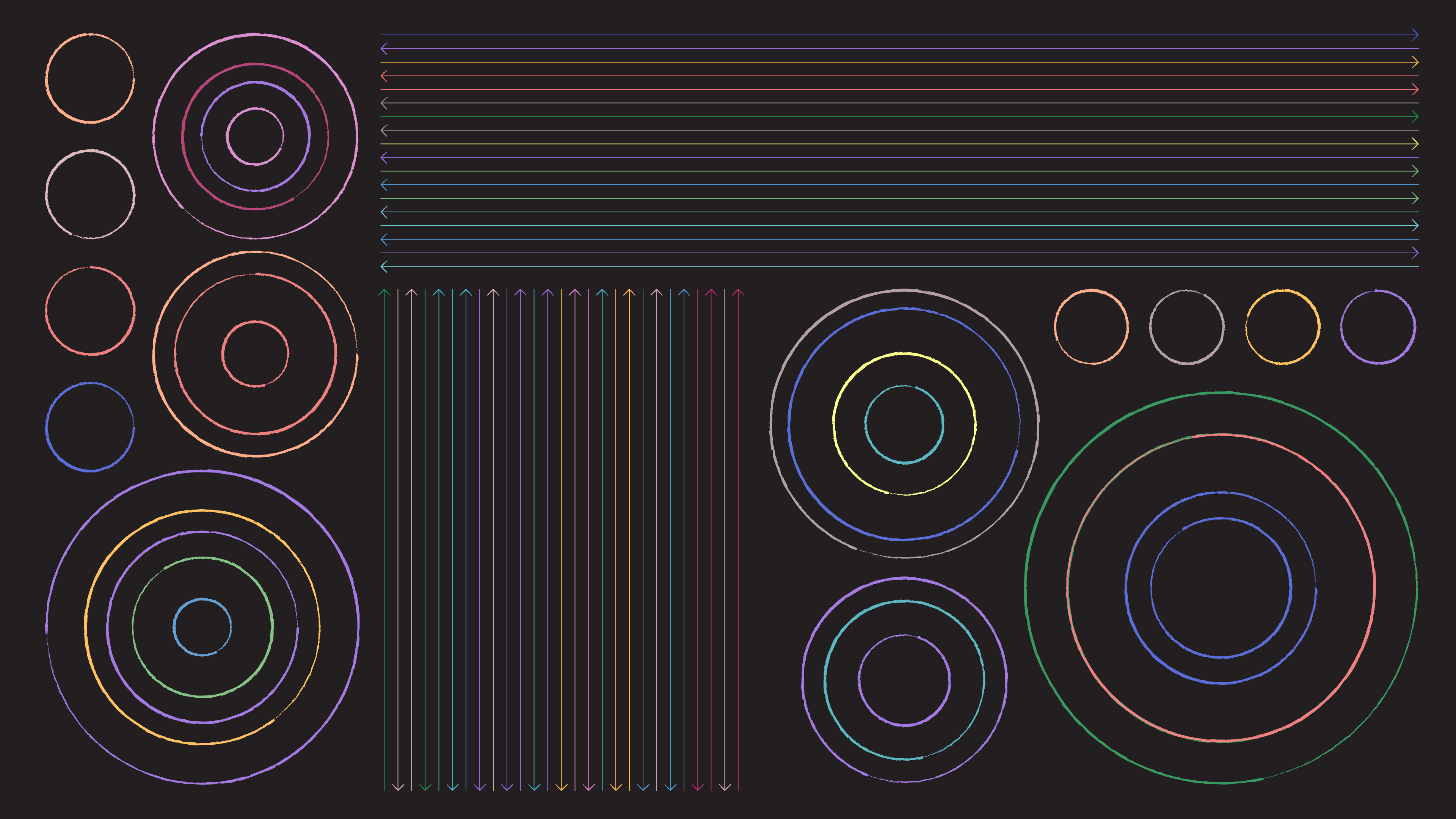 A breakdown of Europe’s €1.5bn migration spending in Nigeria
Take a closer look at the data on European migration projects in Nigeria in this update.
A breakdown of Europe’s €1.5bn migration spending in Nigeria
Take a closer look at the data on European migration projects in Nigeria in this update.
2) Where isn’t the money going?
When we look at the list of institutions – or “implementing agencies”, as they’re known in policy speak – that receive money from Europe, one thing immediately stands out: virtually none of them are Nigerian organisations.
“The EU funds projects in Nigeria, but that money doesn’t go directly to Nigerian organisations,” says Charles Nwanelo, head of migration at the NCFRMI. “Instead, it goes to international organisations, such as the IOM, which use the money to carry out projects here. This means we actually have no idea how much money the EU is spending in Nigeria.”
We hear the same story again and again from Nigerian government officials: they never see a cent of European funding, as it’s controlled by EU and UN organisations. This is partially a response to corruption within Nigerian institutions – Europe feels it can keep closer tabs on its money by channelling it through international organisations. As a result, these organisations are growing rapidly in Nigeria. To get an idea of just how rapidly: the number of people working for the IOM in Nigeria has more than quadrupled over the past two years.

Of course, this doesn’t mean that Nigerian organisations are going unfunded. Implementing agencies are free to pass funding along to Nigerian groups. For example, the IOM hires Nigerian NGOs to provide training for returning migrants and sponsors a project that provides training and new software to the Nigerian immigration service.
Nevertheless, the system has inevitably led to the emergence of a parallel aid universe in which the Nigerian government plays only a supporting role. “The Nigerian parliament should demand to see an overview of all current and upcoming projects being carried out in their country every three months,” says Bob van Dillen, migration expert at development organisation Cordaid.
But that would be “difficult”, according to one German official we spoke to, because “this isn’t a priority for the Nigerian government. This is at the top of Europe’s agenda, not Nigeria’s.”
Most Nigerian migrants to Europe come from Edo state, where the governor has been doing his absolute best to compile an overview of all migration projects. He set up a task force that aims to coordinate migration activities in his state. The task force has been largely unsuccessful because the EU doesn’t provide it with any direct funding and doesn’t require member states to cooperate with it.
3) What are the real-world consequences for Nigeria?
We’ve established that the Nigerian government isn’t involved in allocating migration spending and that local officials are struggling to keep tabs on things. So who is coordinating all those billions in funding?
Each month, the European donors and implementing agencies mentioned above meet at the EU delegation to discuss their migration projects. However, diplomats from multiple European countries have told us that no real coordination takes place at these meetings. No one checks to see whether projects conflict or overlap. Instead, the meetings are “more on the basis of letting each other know”, as one diplomat put it.
One German official noted: “What we should do is look together at what works, what doesn’t, and which lessons we can learn from each other. Not to mention how to prevent people from shopping around from project to project.”
Other diplomats consider this too utopian and feel that there are far too many players to make that level of coordination feasible. In practice, then, it seems that chaotic funding streams inevitably lead to one thing: more chaos.
And we’ve only looked at one country ...
That giant plate of spaghetti we just sifted through only represents a single serving – other countries have their own versions of Nigeria’s migration spaghetti. Alongside Nigeria, the EU has also designated Mali, Senegal, Ethiopia and Niger as “priority countries”. The EU’s largest migration fund, the EUTF, finances projects in 26 different African countries. And the sums of money involved are only going to increase.
When we first started this project, our aim was to chart a path through the new European zeal for funding. We wanted to track the flow of migration money to find answers to some crucial questions: will this funding help Nigerians make better lives for themselves in their own country? Will it help reduce the trafficking of women? Will it provide more safe, legal ways for Nigerians to travel to Europe?
Or will it primarily go towards maintaining the international aid industry? Does it encourage corruption? Does it make migrants even more vulnerable to exploitation along the way?
But we’re still far from answering these questions. Recently, a new study by the UNDP called into question “the notion that migration can be prevented or significantly reduced through programmatic and policy responses”.
Nevertheless, European programming and policy responses will only increase in scope in the coming years.
But the more Europe spends on migration, the more tangled the spaghetti becomes and the harder it gets to check whether funds are being spent wisely. With the erosion of transparency comes the erosion of democratic oversight.
So to anyone who can figure out how to untangle the spaghetti, we say: be our guest.
This series is developed with the support of the Money Trail Project. It was translated from the Dutch by Megan Hershey.
If you’d like to explore the data further, click here for a downloadable PDF version.
Dig deeper
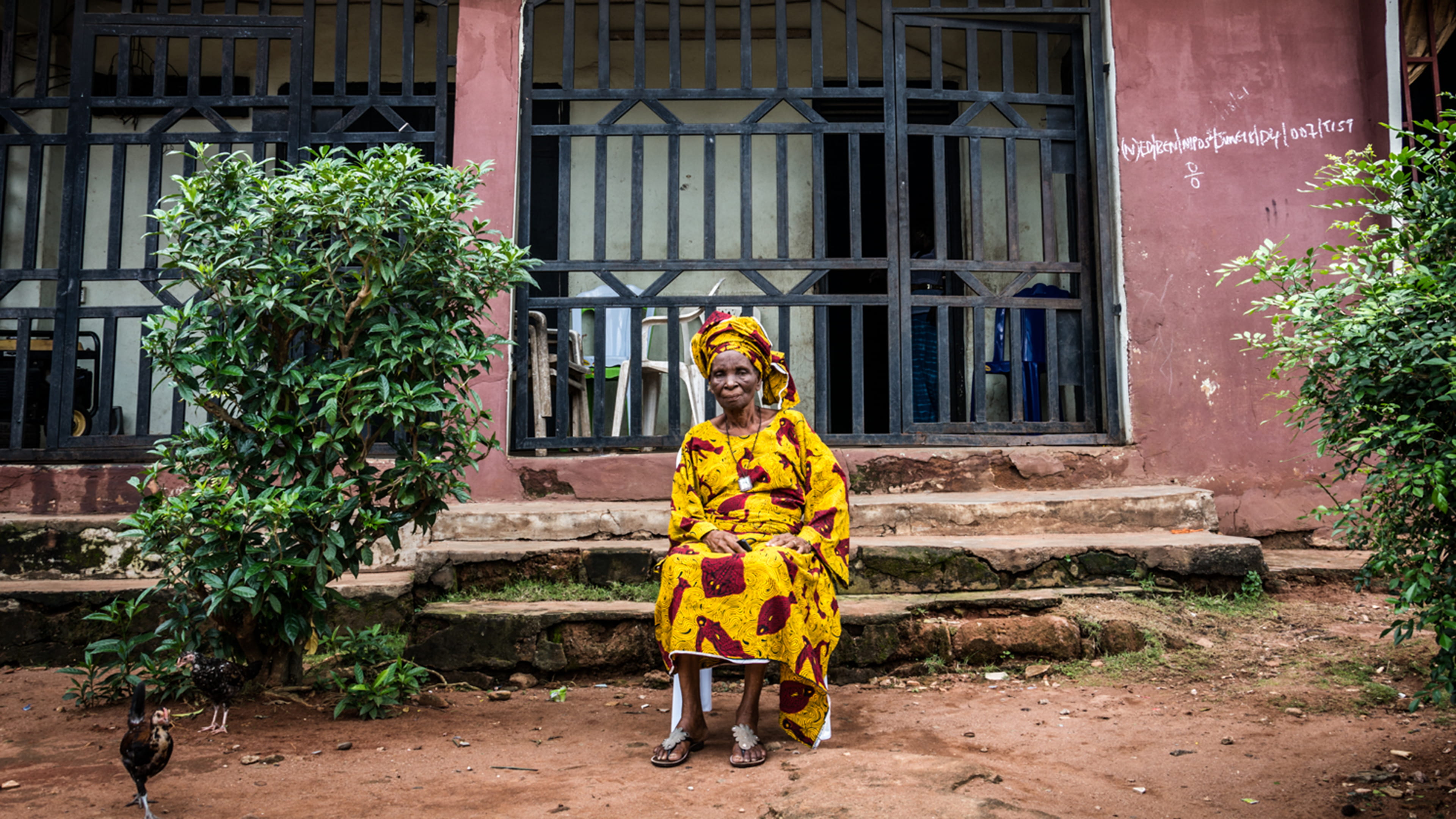 Want to make sense of migration? Ask the people who stayed behind
More than 50% of all Nigerian migrants in the EU come from a single, relatively small city. I visited Benin City to find out why. Talking to the people who never left, I heard stories that upend Europe’s narrow narrative of a multifaceted issue.
Want to make sense of migration? Ask the people who stayed behind
More than 50% of all Nigerian migrants in the EU come from a single, relatively small city. I visited Benin City to find out why. Talking to the people who never left, I heard stories that upend Europe’s narrow narrative of a multifaceted issue.


